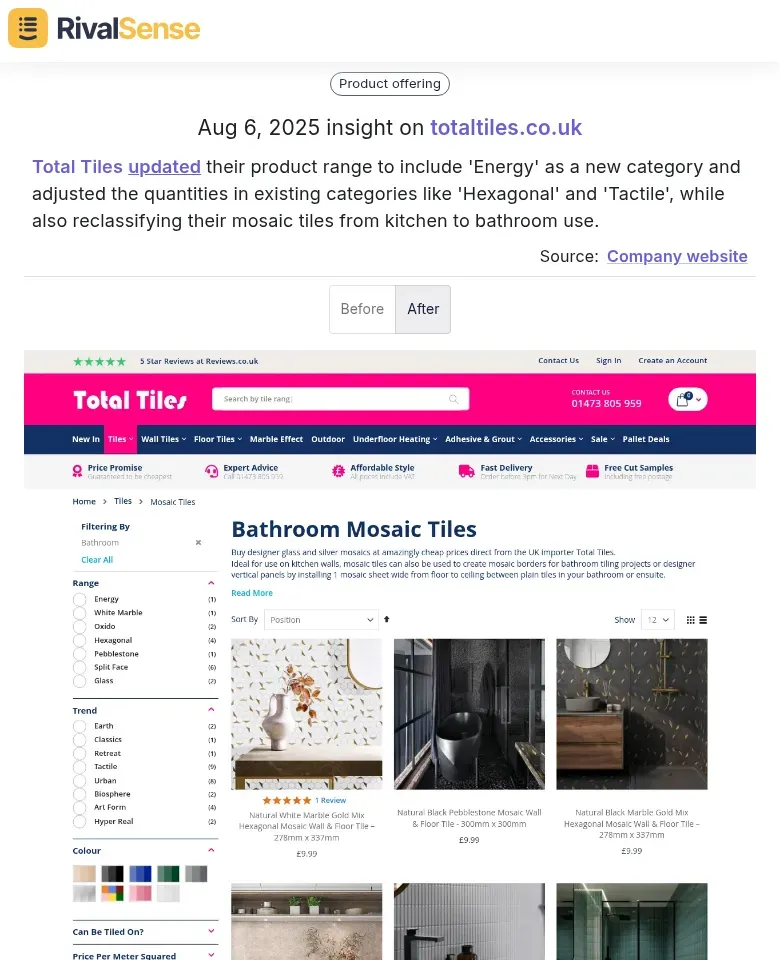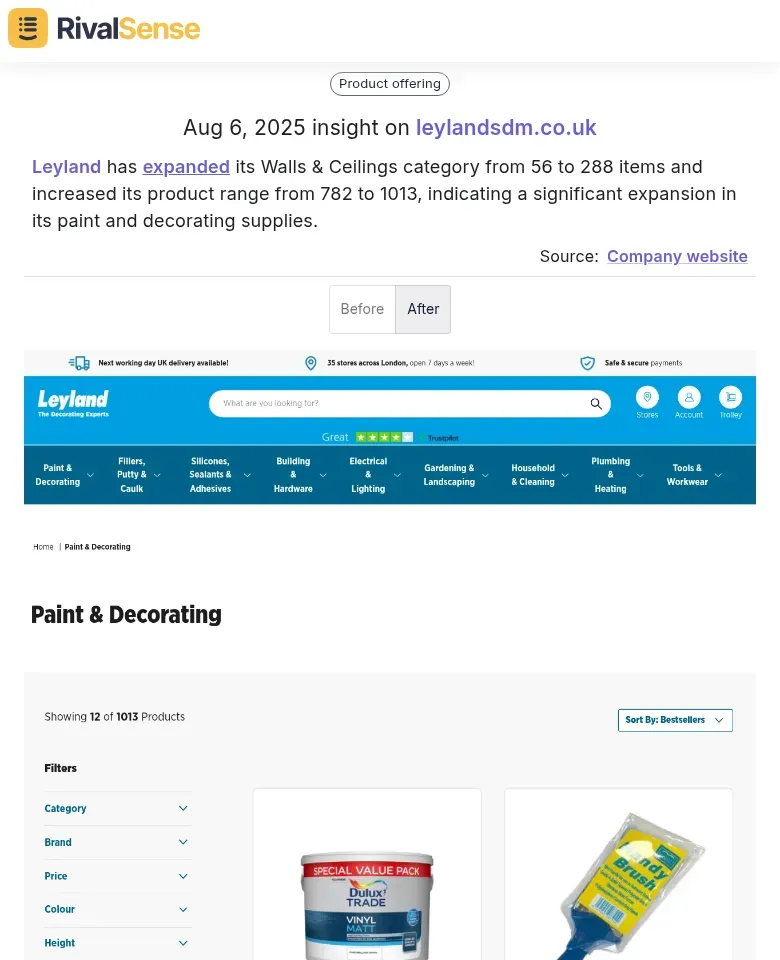Advanced Tactics for Tracking B2B Dropshipping Competitors
In the fast-paced world of B2B dropshipping, staying ahead of competitors isn't just an advantage—it's survival fuel for your business. Competitor tracking uncovers market trends, identifies strategy gaps, and reveals opportunities before others spot them. By analyzing competitors' pricing, marketing, and operational moves, you can refine your approach to outperform them. This section explores how systematic monitoring shapes winning strategies in wholesale distribution.
Effective tracking transforms raw data into actionable intelligence. For example, observing product assortment changes might reveal untapped niches, while engagement pattern analysis could inspire service improvements. To start strong:
- Identify Key Competitors: Use specialized tools to map businesses targeting your audience
- Monitor Pricing Shifts: Track website updates and promotional emails
- Analyze Channel Effectiveness: Note which platforms drive their engagement
These advanced tactics will help you leverage competitive intelligence for sustainable growth.
Identifying Your Key Competitors
Pinpointing the right competitors to monitor is foundational for strategic insights in B2B dropshipping. Not all market players deserve your attention—focus on those directly impacting your growth trajectory. Prioritizing competitors based on strategic relevance saves resources and sharpens your competitive edge.
Here’s how to systematically identify and analyze key players:
-
Strategic Selection Criteria
- Market Influence: Track competitors controlling significant niche share
- Product Alignment: Focus on businesses with overlapping offerings
- Growth Velocity: Monitor rapidly expanding players for emerging tactics
- Audience Overlap: Analyze competitors targeting identical customer segments
-
Identification Methods
- SEO Analysis: Discover competitors ranking for your core keywords
- Social Listening: Identify players engaging your prospects on LinkedIn/Twitter
- Marketplace Scouting: Explore Alibaba/Thomasnet for supplier hierarchies
- Review Mining: Study Trustpilot comparisons revealing competitive benchmarks
-
Positioning Assessment
- Pricing Tiers: Categorize as premium, mid-range, or budget players
- Value Differentiation: Note unique shipping, service, or product advantages
- Messaging Analysis: Decode their brand communication strategies
✅ Competitor Identification Checklist
- [ ] List top 5 competitors by market share
- [ ] Audit their online presence via SEO/social tools
- [ ] Compare pricing, shipping, and service models
- [ ] Analyze customer review patterns
- [ ] Track campaign timing and content themes
Leveraging Technology for Competitor Analysis
Manual competitor tracking can't match today's market velocity—technology bridges this gap. Automated tools provide real-time alerts and comprehensive data aggregation, transforming analysis from reactive chore to strategic advantage. These solutions detect subtle changes human observers might miss.
Consider how Total Tiles reclassified mosaic tiles from kitchen to bathroom use while adding an 'Energy' category—a strategic pivot detectable through automated monitoring:

Tracking category restructuring like this reveals expansion priorities and helps anticipate inventory shifts. Implement these tech-powered approaches:
- Specialized Monitoring Platforms: Use tools like RivalSense for pricing, product, and promotion tracking
- Automated Alert Systems: Set triggers for website changes or new launches
- Real-Time Dashboards: Consolidate data streams for instant strategy adjustments
🔧 Practical Implementation
- Create metric checklists (pricing, inventory, reviews)
- Integrate CRM systems to track shared client interactions
- Schedule weekly data validation sweeps
Analyzing Competitor Pricing and Product Strategies
Pricing and product decisions are the twin engines of dropshipping competitiveness. Regular analysis exposes opportunities for margin optimization and assortment refinement. Spotting patterns in competitor moves helps predict market shifts before they impact your bottom line.
When Leyland expanded its Walls & Ceilings category from 56 to 288 items while growing overall SKUs by 30%, it signaled strategic investment in home improvement supplies:

Monitoring such expansions helps anticipate inventory needs and identify emerging product trends. Master these analytical dimensions:
-
Pricing Pattern Tracking
- Identify seasonal discounts or inventory-clearance patterns
- Conduct weekly audits to detect margin-eroding price wars
-
Assortment Evolution Analysis
- Track SKU additions/discontinuations through automated alerts
- Evaluate new product uniqueness and market responsiveness
-
Strategic Response Framework
- Benchmark against competitor moves without sacrificing profitability
- Cross-reference competitor actions with your sales data
📊 Action Tip: Maintain a live competitor dashboard tracking:
| Metric | Tracking Frequency | Strategic Use |
|---|---|---|
| Price Changes | Daily | Margin protection |
| New SKUs | Weekly | Assortment planning |
| Category Expansions | Monthly | Trend forecasting |
Monitoring Competitor Marketing and Sales Tactics
Competitor go-to-market strategies offer invaluable learning laboratories. Analyzing their promotional mechanics and customer engagement reveals high-performing tactics while exposing audience pain points. This intelligence fuels your own conversion-optimized campaigns.
When Bettys labeled 'Yorkshire Fat Rascal® Scones' as 'OUR BEST SELLER' while launching new product lines, it demonstrated effective merchandising psychology:

Spotlighting bestsellers builds social proof while new launches test market expansion—insights crucial for your promotional planning. Track these dimensions:
-
Promotional Campaign Dissection
- Audit active ads via Facebook Ad Library
- Subscribe to competitor newsletters for email strategy insights
- Map social media engagement peaks to campaign timing
-
Sales Channel Performance
- Identify their platform mix (Shopify, Amazon, etc.)
- Analyze customer review sentiment across channels
-
Adaptation Framework
- Convert competitor weaknesses into your differentiators
- Test refined versions of their high-performing creatives
✅ Tactic Optimization Checklist
- [ ] Reverse-engineer their customer journey
- [ ] Document promotional calendar patterns
- [ ] Conduct A/B tests on competitor-inspired campaigns
- [ ] Benchmark service response times
Turning Insights into Actionable Strategies
Competitor intelligence only creates value when converted into operational improvements. The most successful B2B dropshippers institutionalize insight translation through structured processes. Documented case studies show businesses achieving 20-30% sales growth by systematically acting on competitive findings.
Build your execution engine with these steps:
-
Insight Operationalization
- Convert findings into specific inventory, pricing, or marketing actions
- Share competitor intelligence with suppliers for negotiation leverage
-
Performance Benchmarking
- Compare conversion rates and AOV against competitors
- Identify underperforming areas through competitive gap analysis
-
Testing Framework
- Run controlled experiments on competitor-validated approaches
- Measure impact through segmented performance tracking
🚀 Implementation Roadmap
- Weekly competitor review sessions
- Quarterly strategy adjustments based on trend analysis
- Dedicated owner for each competitive KPI
Conclusion: From Observation to Dominance
Mastering competitor tracking transforms market awareness into sustainable advantage. By implementing these advanced tactics—from strategic competitor selection to insight operationalization—you'll build a more resilient, responsive B2B dropshipping operation.
📈 Ready to upgrade your competitive intelligence?
See how RivalSense automates competitor tracking across product changes, pricing updates, and marketing moves—delivering actionable insights in weekly reports. Get your first competitor report today and start outmaneuvering your competition.
📚 Read more
👉 How Aeschbach's Expansion Prompted Rival Strategy Shifts
👉 Master Competitor Insights: Track Roadmap Signals for Strategic Advantage
👉 Predictive Analysis in Fintech: Decoding Competitor Strategies for Market Leadership
👉 Optimizing Market Entry with Competitor Advisory Insights
👉 How to Decode Strategic Shifts Through Competitor Partnerships
